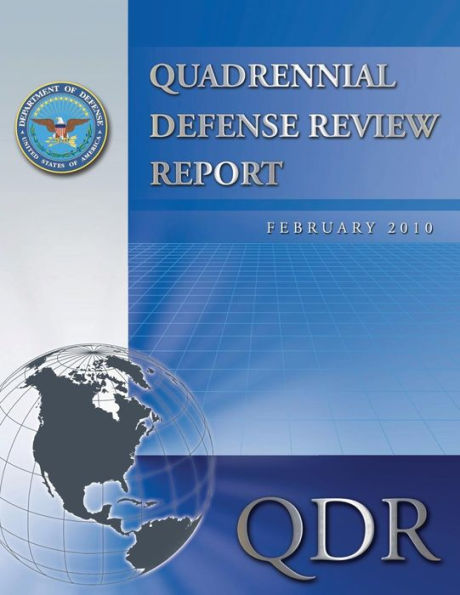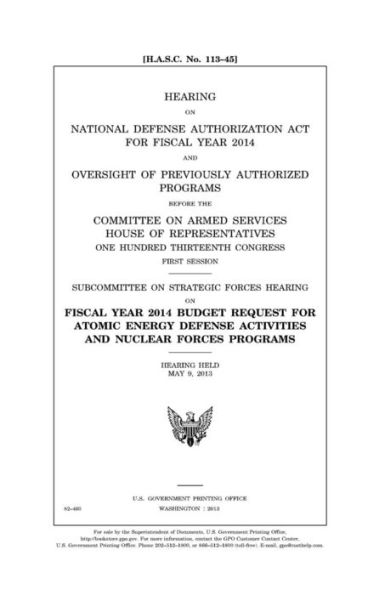Home
Quadrennial Defense Review Report: February 2010
Loading Inventory...
Barnes and Noble
Quadrennial Defense Review Report: February 2010
Current price: $19.99


Barnes and Noble
Quadrennial Defense Review Report: February 2010
Current price: $19.99
Loading Inventory...
Size: OS
*Product Information may vary - to confirm product availability, pricing, and additional information please contact Barnes and Noble
The mission of the Department of Defense is to protect the American people and advance our nation's interests. In executing these responsibilities, we must recognize that first and foremost, the United States is a nation at war. In Afghanistan, our forces fight alongside allies and partners in renewed efforts to disrupt, dismantle, and defeat Al Qaeda and the Taliban. In Iraq, U.S. military personnel advise, train, and support Iraqi forces as part of a responsible transition and drawdown. Above all, the United States and its allies and partners remain engaged in a broader war-a multifaceted political, military and moral struggle-against Al Qaeda and its allies around the world. Furthermore, as a global power, the strength and influence of the United States are deeply intertwined with the fate of the broader international system-a system of alliances, partnerships, and multinational institutions that our country has helped build and sustain for more than sixty years. The U.S. military must therefore be prepared to support broad national goals of promoting stability in key regions, providing assistance to nations in need, and promoting the common good. With these realities in mind, the 2010 Quadrennial Defense Review advances two clear objectives. First, to further rebalance the capabilities of America's Armed Forces to prevail in today's wars, while building the capabilities needed to deal with future threats. Second, to further reform the Department's institutions and processes to better support the urgent needs of the warfighter; buy weapons that are usable, affordable, and truly needed; and ensure that taxpayer dollars are spent wisely and responsibly. The strategy and initiatives described in the QDR will continue to evolve in response to the security environment. Using the QDR as its foundation, the Department will continually examine its approach-from objectives to capabilities and activities to resources-to ensure its best alignment for the nation, its allies and partners, and our men and women in uniform. The United States faces a complex and uncertain security landscape in which the pace of change continues to accelerate. The distribution of global political, economic, and military power is becoming more diffuse. In order to help defend and advance our national interests, the Department of Defense balances resources and risk among four priority objectives: prevail in today's wars, prevent and deter conflict, prepare to defeat adversaries and succeed in a wide range of contingencies, and preserve and enhance the All-Volunteer Force. These priorities shape not only considerations on the capabilities our Armed Forces need but also the aggregate capacity required to accomplish their missions now and in the future. Our approach to achieving them must evolve and adapt in response to a changing security environment. The security environment demands improved capabilities to counter threats in cyberspace. The priorities advanced in the QDR, coupled with both the FY 2010 and FY 2011 budgets reflect the Secretary's consistent emphasis on ensuring the Department does everything possible to enable success in today's wars while preparing for a complex and uncertain future. This QDR report and the preceding months of deliberation served two purposes: first, to establish the Department's key priority objectives, providing context and recommendations regarding capability development and investment portfolios; and second, to communicate the Secretary's intent for the next several years of the Department's work. The QDR thus serves as a critical capstone document, shaping how the Department of Defense will support America's men and women in uniform today, and building the policy and programmatic foundation for security in the years to come.


















